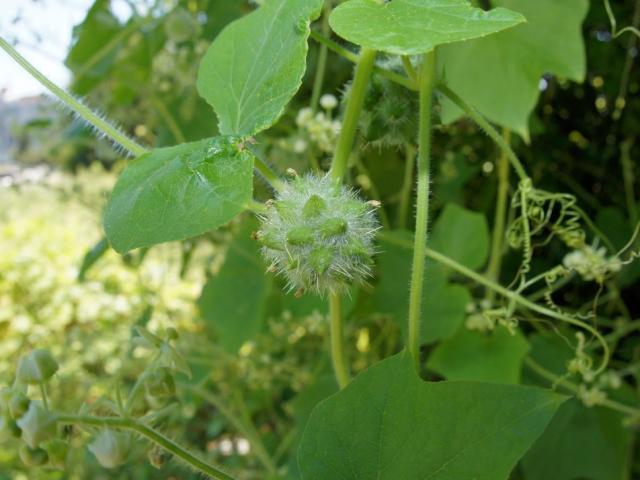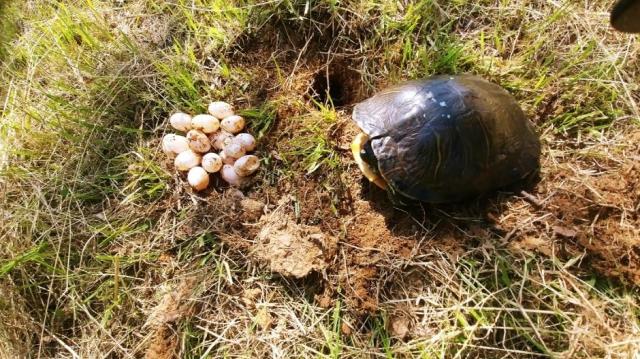
The 12-legged insects fly around in pairs while mating. Known to prefer white over black, they latch onto brightly colored clothing. Attracted to exhaust fumes, they often dive into vehicles, causing car corrosion.
“The bugs were rampant from mid-June to the end of the month. A total of 982 complaints about lovebug outbreaks were submitted during that period, just in our district,” a district official said.
Lovebugs are among about 2,000 alien species currently documented in Korea. While the insects may be a minor annoyance, some invasive species pose significant threats to the nation’s ecosystems.
American bullfrogs are clogging rivers and streams, citrus flatid planthoppers suck juices from fruits, contaminating them with sooty molds, and bur cucumbers are choking out native plant species.


A 2019 video showing scenes of hunting and cooking the turtles has attracted more than 4 million views on YouTube. In the video, a masked man known as U.M.A, carrying a hand plow and a plastic container, scours marshes in Ansan, south of Seoul, searching for turtles and their eggs, which end up in his meat soup.


“We have caught 873 nutrias as of May. We plan to continue the project until the end of 2024, as long as the budget permits,” an official said.
Experts are calling for measures to prevent dangerous species from entering the environment, including stricter import regulations.
Sung Min-gyu, a researcher with the Biodiversity Foundation, suggests that the nation should adopt import restrictions similar to New Zealand's “Whitelist,” which limits the entry of potentially invasive species.
“Some U.S. states have approval systems for alien species pets. Such systems could greatly reduce the chances of foreign species being released into the environment,” Sung added.

Local governments across the country are employing various strategies to combat invasive species, including public participation events, professional extermination campaigns, and the release of native predators.
On July 15, authorities in North Chungcheong Province released about 8,400 baby leopard mandarin fish into local waters. Known as apex predators in Korean freshwater ecosystems, mandarin fish prey on invasive species such as largemouth bass and bluegills.

Another pressing question for policymakers is how to dispose of invasive animals captured or killed during eradication efforts. While some species, such as American bullfrogs, have found use in traditional medicine, most do not have practical applications.
In South Chungcheong Province, officials attempted to make fish cakes from bigmouth bass and bluegill in 2021. However, the project was discontinued the following year due to logistical issues that made it difficult to obtain fresh bass and bluegill suitable for human consumption.

"As far as we know, there are no guidelines restricting the disposal of these species," a spokesperson from the Geum River Basin Environmental Office said. "Instead of simply discarding the fish, we distribute them to those who can make use of them."

“We provided examples of how to dispose of exterminated creatures, but we are not aware of specific procedures for processing them into manure or feed,” a ministry official in charge of invasive species said.
The treatment of invasive species also raises ethical questions, necessitating a balance between ecological concerns and animal welfare. Researcher Sung Min-gyu highlighted the legal constraints on handling captured animals.
"It is forbidden by law to transport invasive species to facilities equipped for euthanasia. Killing alien mammals on-site violates the Animal Protection Act," he said.
While some alien species may not cause significant harm, Korea's capacity to forecast their ecological impacts lags behind that of countries like the U.S., which could lead to errors in regulating these creatures, he added.
Copyright ⓒ Aju Press All rights reserved.



